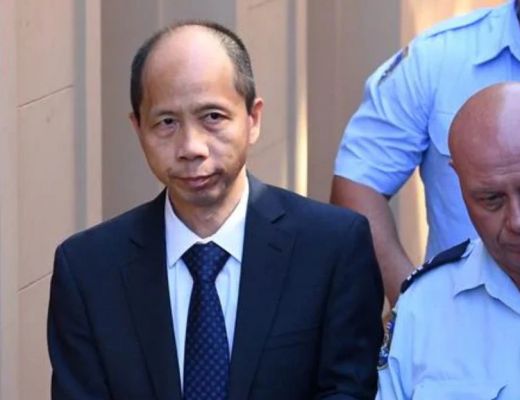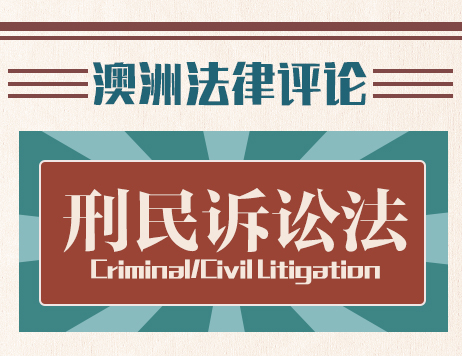如果你在澳洲被”吐槽”或诽谤,应该怎么办?| Understanding Defamation in Australia
关于此文的更多问题,欢迎联系小编获得更多资讯:Auslawreview01,获得澳洲(昆士兰州布里斯班)华人律师团队的法律建议。
In limited circumstances, the court may extend the period in which to commence an action to a maximum of 3 years, for example where the publisher cannot be identified, or the plaintiff was not aware of the publication within one year.
在有限的情况下,法院可以将提起诉讼的期限延长至最长3年,例如,在无法确定发布者的情况下,或者原告在一年内不了解信息发布的情况。
The material has to be published to at least one person other than the plaintiff. For example, a person can’t be defamed by a letter which only they receive, and which is not published to a wider audience.
Publication is defined very broadly. Publication can include, but is not limited to:
• spoken words, for example during a radio broadcast or television program
• written or printed materials, including emails, social media posts, blogs and websites
• online reviews
• drawings and cartoons
• paintings
• poetry, and
• live theatrical performances
For a defamation claim to be successful, the plaintiff has to prove that they were identified in some way by the publication. For example, their name might have been used, or their photo might have been published together with other defamatory remarks. In some cases, describing the characteristics or identifying features of a person may be enough to show that they were identified.
3. The information had defamatory imputations about the plaintiff.
A communication is considered defamatory where it causes others to think less of the plaintiff. It can disparage the plaintiff, cause other people to shun or avoid the plaintiff, or subject them to hatred, public ridicule or contempt.
The plaintiff doesn’t need to establish any actual loss as a result of the communication. The key consideration is whether the plaintiff’s reputation would be injured in the mind of an ‘ordinary reasonable person’.
该材料必须发布给原告以外的至少一个人。例如,一个人不会因为只有他们收到的,不会发布给更多听众的信而受到诽谤。
出版物的定义非常广泛。出版物可以包括但不限于:
· 言语,例如在广播或电视节目中
· 书面或印刷材料,包括电子邮件,社交媒体帖子,博客和网站
· 在线评论
· 图纸和卡通
· 绘画
· 诗歌,以及
· 现场文艺演出
2. 该信息可识别原告。
为了成功进行诽谤诉讼,原告必须证明信息以某种方式对其身份进行了识别。例如,他们的名字可能已被使用,或者他们的照片可能已与其他诽谤性言论一起发布。在某些情况下,描述一个人的特征或识别特征可能足以表明他们已被识别。
3. 该信息带有关于原告的诽谤性指责。
信息被认为具有诽谤性,导致他人对原告的评价下降。它可能贬低原告的利益,使其他人规避或避开原告,或者使他们遭受仇恨,公开嘲笑或蔑视。
原告无需证明由该信息造成的任何实际损失。关键考虑因素是原告的声誉是否会在“普通合理人”的脑海中受到损害。
The Uniform Defamation Laws limit the ability of corporations to sue for defamation. The only corporations or organisations that can sue for defamation are not-for-profit corporations (not including local government or public authorities) and corporations that employ fewer than ten people.
1. Justification
The defence of justification will apply where the defendant can establish that the defamatory imputation is substantially true.
2. Contextual truth
The defence of contextual truth will be made out where the publication also carries other imputations which are substantially true, and because of the truth those other imputations, the allegedly defamatory imputations are not harmful to the reputation of the plaintiff.
3. Absolute privilege
Where the defamatory imputations are published during an occasion of absolute privilege, such as during parliamentary proceedings or during a hearing of a judicial body, then the statements are made subject to privilege and the conveyer of those statements cannot be held liable for such.
4. Public Documents
It is a defence to prove that the defamatory matter was contained in a public document, or a fair summary of a public document, unless the matter was not honestly published for the information of the public or the advancement of education.
5. Fair report of proceedings of public concern
It is a defence to prove that the defamatory material was published as a part of a fair report of proceedings of public concern or was published in an earlier report of the same proceedings and the publisher had no reason to believe that the earlier report was not fair. The definition of proceedings of public concern is fairly broad, including but not limited to parliamentary or court proceedings.
6. Qualified privilege
It is a defence to prove that the recipient of the material has an interest in having information on a subject, the material is published in the course of providing the recipient with information on that subject and the defendant acted reasonably in publishing that material.
It is a defence to prove that the publisher, or the publisher’s employee, was expressing their opinion rather than making a statement of fact, the opinion was about a matter of public and the opinion is based on proper material. Material will be proper material if it is substantially true or was published on an occasion of privilege (absolute or qualified), or was material published under the protection of the public documents or reporting proceedings of public concern defences.
8. Innocent dissemination
It is a defence to prove that the publisher only published the material in his/her capacity as a subordinate distributor, agent or employee of another entity, and the publisher did not know, or have reason to believe that the material was defamatory, and the publisher’s lack of knowledge is not the result of the publisher’s negligence.
9. Triviality
It is a defence to prove that the circumstances of the publication are such that the defendant is unlikely to suffer damage.
1. 行为正当
在被告可以确定诽谤性推定实质上是真实的情况下,将使用辩护辩护。
2. 内容真实
在出版物还载有其他实质上属实的推论的情况下,可以辩护上下文事实,并且由于这些其他推论的事实,所谓的诽谤性推论对原告的声誉无害。
3. 绝对特权
如果在绝对特权的情况下,例如在议会诉讼中或在司法机构的听证会中发布诽谤性指责,则该声明应享有特权,并且这些声明的传达者不对此承担责任。
4. 公开文件
证明诽谤性问题包含在公共文档中或公共文档的公平摘要中是一种辩护,除非该信息未如实地发布以供公众参考或促进教育。
5. 公众关注的诉讼程序的公正报告
可以证明该诽谤性材料是作为公平关注的法律程序的公正报告的一部分发表或在同一法律程序的较早报告中发表的,这是一种辩护,而出版者没有理由认为该较早报告不公平。公众关注的诉讼程序的定义相当广泛,包括但不限于议会或法院诉讼程序。
材料的接收者有权利获取有关该主题的信息,该材料是在向接收者提供有关该主题的信息的过程中发布的,而被告在发布该材料时采取了合理的行动。
7. 发表意见
发布者或发布者的雇员是在表达他们的观点而不是陈述事实是一种辩护,该观点是关于公共事务的,并且该观点基于适当的材料。如果材料实质上是真实的,或者是在特权场合(绝对或有条件的场合)出版的,或者在公共文件或举报程序中为公众关注的辩护而保护的,则该材料将是适当的材料。
8. 无罪的传播 (“仅仅是听命行事”)
可以证明发布者仅以其作为其他实体的下属分销商,代理商或雇员的身份发布了该材料,而发布者不知道或有理由认为该材料是诽谤性的,这是一种辩护。发布者缺乏知识不是发布者疏忽的结果。
9. 琐事 (“聊聊很无所谓的八卦”)
可以证明信息传播的情况使得被告不太可能遭受损害是一种辩护。
1. Apologies
When faced with a claim for defamation, it’s important to consider apologising or recanting the defamatory statement. An apology doesn’t constitute an admission of guilt and is not relevant in determining the fault or liability for a defamatory publication.
2. Offer to make amends
Where a defamatory publication has been made, the publisher may make an offer to make amends to the aggrieved person.
An offer to make amends must be made within 28 days of being served or presented with a ‘concerns notice.’ An offer to make amends cannot be made if a defence has already been served in a legal action brought by the aggrieved person against the publisher.
1. 致歉
面对诽谤申诉时,请认真考虑道歉或公开撤回诽谤性声明,这一点很重要。道歉并不构成认罪,与确定诽谤性信息的过错或责任无关。
2. 提出赔偿的要约
发布诽谤性信息的,发布者可以提出要约,以对受害人进行赔偿。
提出赔偿的要约必须在送达或提出“关注通知”之日起28天内提出。如果发布者在受害者针对发布者提起的法律诉讼中已提出抗辩,则不能提出赔偿要约。
There is a statutory maxiymum of $250,000.00 for non-economic damages, being damages that have been suffered by cause of the defamation but do not constitute a direct economic loss under section 35(1) of Defamation Act 2005 (Qld). General harm to the plaintiff’s reputation would be a non-economic loss. However, if the plaintiff loses a specific commercial opportunity as a result of the defamation, then the value of that opportunity would be an economic loss.
The Plaintiff may also seek an injunction against the Defendant to require the removal of the defamatory material and/or prevent the Defendant from publishing further material on the subject.
根据Defamation Act 2005 (Qld) 第35(1)条的规定,非经济损失的法定最高限额为250,000.00澳币,这是由于诽谤而遭受的损失,但不构成直接经济损失。对原告声誉的一般损害将是非经济损失。但是,如果原告由于诽谤而失去了特定的商业机会,那么该机会的价值将是经济损失。
2. 强制令
原告还可以寻求对被告的强制令,要求删除该诽谤性材料和/或阻止被告就该主题发表其他材料。
在昆士兰州发布恶意诽谤内容的罚款为法院判处的罚金和/或3年及以下监禁。
1. Concerns Notice
The first step is drafting and issue a “Concerns Notice” pursuant to section 14 of Defamation Act 2005 (Qld). The Concerns Notice will put the defendant on notice of their defamatory actions and stipulate the conditions for the removal of the defamatory material.
2. Court Proceedings
If the Defendant fails to offer to make amends in accordance with the Concerns Notice, then the Plaintiff will be required to commence proceedings for defamation in either the District Court of Queensland or Supreme Court of Queensland.

1. 发送关注通知
第一步是根据Defamation Act 2005 (Qld) 第14条起草并发送“关注通知”。关注通知将通知被告其诽谤行为,并规定了移除诽谤材料的条件。
2. 法庭程序
如果被告未能根据关注通知提出赔偿要求,则原告将被要求在昆士兰州地方法院或昆士兰州最高法院提起诽谤诉讼。





















